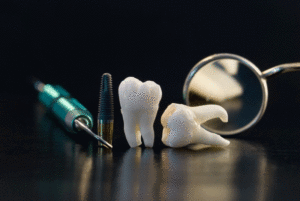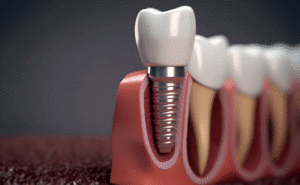Any dentist will tell you how harmful sugar can be to your teeth. That’s because the bacteria that bond together to form plaque actually uses sugar as its energy source. So the more sugar you consume, the more plaque that is likely to develop inside the mouth. And plaque can not only lead to the likes of tooth decay, but gum disease as well if it gets below the gum line.
Now, sugar is OK if it’s consumed in moderation. However, with Halloween coming up, young ones across the nation are going to be indulging in the candy and treats that help define the holiday. With that in mind, now is a good time to take a look at the worst types of candy for your teeth.
The Worst Candy for Your Teeth
Not all candies are created equal when it comes to the potential damage they can have on your teeth. As a reminder, we’re not telling you to put a moratorium on candy consumption this Halloween, just know what treats need to be limited. Here’s a look:
- Chewy/Sticky Sweets: Chewy and sticky sweets include the likes of certain types of gum, taffy and popular candies such as Milk Duds and Tootsie Rolls. These types of candies are so harmful because they have a tendency to get stuck between the teeth where the saliva is unable to break them down and wash them away. As they’re stuck between the teeth, they can do serious damage if left to linger, both to your teeth and gums.
- Sour Candies: Sour Patch Kids and Sour Skittles are types of sour candies – and these types of treats are problematic for several reasons. First of all, they’re high in acid, so they’re more likely to break down tooth enamel. Secondly, you can actually do more damage to your teeth if you brush immediately after consuming sour candies, as many do. If the acid from the candy still exists inside the mouth, you’re just brushing the acid onto more teeth.
- Hard Candies: Suckers, jawbreakers and mints can be difficult on teeth because they’re often high in sugar and more likely to cause chips and cracks during consumption due to their hard nature. Suckers and longer-lasting candies are especially problematic because they’re consumed over several minutes and not all at once. This means that the whole mouth is literally coated in sugar, which leads to tooth decay.
Better Candy
Contrary to what many believe, there are good types of candy to consume. These include the likes of:
- Sugar-free gum: It leaves no sticky residue and is typically made with a natural sugar that doesn’t contribute to tooth decay.
- Chocolate: Just make sure that the chocolate doesn’t have a sticky filling – it won’t stick to your teeth and can be consumed quickly.
- Powdery candy: Powdery candy still contains sugar, but since it’s in a powder form, it dissolves fast and usually won’t stick to the teeth long enough to do harm.
Like we said in the opening, candy is OK – just so long as it’s consumed in moderation. And on Halloween, kids – and adults too – have a tendency to not limit what’s eaten. Be sure that you know the good and bad types of candies for your teeth this year – and take the necessary measures to ensure that you’re not encouraging cavities to form with your eating habits.
For more information, contact Caven Dental today.


